What is Sandblasting Nozzle Guide
Sandblasting nozzle guides are specialized tools designed to direct the flow of abrasive materials, such as sand or glass beads, onto a surface at high velocity to remove rust, paint, scale, and other contaminants. These guides are essential for professionals in various industries, including manufacturing plants, construction companies, and machinery repair shops, who rely on the precision and efficiency of abrasive blasting for surface preparation.
The principle behind sandblasting nozzle guides is the Venturi effect. They work by creating a pressure difference between the air or water carrying the abrasive material and the atmosphere. This difference in pressure propels the abrasive material out of the nozzle at high speed. The design of the nozzle—including the materials it is made from and its shape—plays a crucial role in the effectiveness of the process. It is through these guides that operators can control factors such as the pattern of the abrasives, the force at which they are propelled, and the area that can be covered in a single pass.
Sandblasting nozzle guides come in various sizes and materials to suit different applications and types of equipment. They are typically connected to a blasting machine that regulates the flow of the abrasive material, providing a consistent stream for efficient cleaning or surface preparation. The use of these guides is not limited to industrial users; they are also employed in smaller settings like home use for tasks such as restoring old furniture or preparing surfaces for painting.
Types of Sandblasting Nozzles Guide
In the realm of surface preparation, sandblasting nozzles come in various configurations, each tailored to specific applications and materials. Here's an overview of some common types:
-
Straight Bore Nozzles: These nozzles have a simple, straight design and are typically used for general surface preparation tasks. They are well-suited for removing light to medium coatings and are commonly found in workshops and small manufacturing plants.
-
Venturi Nozzles: Venturi nozzles feature a unique design that creates a vacuum that draws in the abrasive material more effectively. This type is particularly useful for removing heavy rust or paint from robust surfaces.
-
Wide-Angle Fan Nozzles: With a broader spray pattern than straight bore nozzles, wide-angle fan nozzles can cover more area with each pass. They are often used in larger surface preparation jobs such as removing industrial scale from boilers or tanks.
-
Rotating Nozzles: These innovative nozzles spin the water stream to provide an even coating of abrasive material across a surface. They are highly effective for cleaning and polishing metal surfaces without damaging them.
-
Silicone Carbide Nozzles: Made from a tough, synthetic material, these nozzles are designed for use with aggressive media and are known for their long service life.
How to choose Sandblasting Nozzle Guide
Choosing the right sandblasting nozzle is crucial for achieving desired surface treatments while considering operational efficiency and cost-effectiveness. Businesses involved in manufacturing plants, construction works, or even small-scale home use should evaluate several factors before selecting a nozzle type:
-
Material Compatibility: The chosen nozzle must be compatible with the abrasive media and the material of the workpiece. For instance, tungsten carbide nozzles are excellent for hard materials but may not be necessary for softer surfaces that can be cleaned with less aggressive blasts.
-
Desired Finish: The degree of finish required will influence the choice of nozzle. Fine finishes might demand a nozzle that produces a gentle spray pattern, while heavy rust removal may need more power and a tighter focus.
-
Operational Environment: Consider where the sandblasting will take place. Different environments may require different types of nozzles; for example, a tungsten carbide nozzle might be preferred in outdoor settings where wind can affect abrasive spray patterns.
-
Equipment Compatibility: Ensure that the chosen nozzle can be used with your existing sandblasting equipment. Nozzle sizes and types should match those recommended by your specific machine's manufacturer.
By carefully assessing these considerations against their operational needs, businesses can select an appropriate sandblasting nozzle that will optimize their blasting processes.
About Sandblasting Nozzle Guide on Alibaba.com
Alibaba.com stands out as an international marketplace connecting businesses with a wide array of sandblasting nozzles suited for various industrial applications. With an extensive network of suppliers offering products from nearly 5,900 different categories, businesses are sure to find the right tool for any surface preparation task they may have. From high-pressure nozzles capable of cutting through thick steel plates to durable ceramic options designed for precision in delicate projects, Alibaba.com caters to all needs within the abrasive blasting spectrum.
The platform's commitment to facilitating global trade is evident through its user-friendly interface that supports local languages and mobile accessibility. Whether you're equipping a small home workshop or scaling up operations at a construction site or manufacturing plant, Alibaba.com provides seamless access to a vast selection of wholesale sandblasting nozzles that can meet diverse industrial requirements. The added reassurance provided by services like Trade Assurance reinforces confidence in transactions by safeguarding payments until delivery completion.
Alibaba.com is not just about product variety; it's also about empowering businesses with convenience and support at every step. Suppliers on Alibaba.com offer customization options such as OEM, ODM, and OBM services—ensuring that businesses can procure specialized equipment tailored to their unique operational needs. With over two decades of experience in e-commerce and a robust system designed to simplify international trade procedures, Alibaba.com exemplifies an indispensable resource for businesses seeking quality sandblasting nozzles.
Common FAQs for Sandblasting Nozzle Guide
What is the primary use of a sandblasting nozzle?
A sandblasting nozzle is used to accelerate abrasive materials at high velocity to remove surface coatings, prepare surfaces for bonding, and create a textured finish on materials.
How do I determine the correct nozzle size for my sandblasting needs?
The correct nozzle size is determined by the type of abrasive being used, the pressure and flow rate of the air compressor, and the specific application requirements.
Can sandblasting nozzles be used with any type of sandblasting system?
Not all sandblasting nozzles are compatible with every system; it's important to select a nozzle that is designed for your equipment and the specific application needs.
What materials are sandblasting nozzles typically made from?
Sandblasting nozzles can be made from various materials including aluminum, stainless steel, tungsten carbide, boron carbide, and ceramic composites.
Are there different types of nozzles for different blasting materials?
Yes, there are different types of nozzles designed for use with specific blasting materials such as aluminum oxide, silicon carbide, and plastic abrasives.
How does the material of a nozzle affect its performance?
The material of a nozzle affects its durability, efficiency in different environments, and its suitability for the type of abrasive used in the blasting process.
Is it possible to get a custom-designed nozzle for unique industrial applications?
Many suppliers offer customized support including OEM and ODM services, allowing businesses to acquire a nozzle tailored to their specific operational needs.
What should I consider when choosing a nozzle for a local service location?
When choosing a nozzle for a local service location, consider the types of surfaces you will be treating, the specific abrasive material being used, the required pressure and flow rates for the job, and any additional features that may enhance productivity or ease of use.
How does the cleaning process work with a sandblasting nozzle?
The cleaning process involves using pressurized air to propel abrasive particles at a surface to remove unwanted coatings or prepare a surface for further treatment.
What maintenance is required for sandblasting nozzles?
Regular maintenance for sandblasting nozzles includes checking for wear or damage, ensuring proper storage of the nozzles when not in use, and conducting periodic inspections to maintain optimal performance.
How do I ensure a long service life for my sandblasting nozzles?
Regular cleaning, proper storage, and timely replacement of worn or damaged parts will help ensure a long service life for your sandblasting nozzles.
Can I use a sandblasting nozzle for wet blasting applications?
While some nozzles may be suitable for wet blasting, it is essential to verify that the nozzle is designed for such use to prevent clogging or poor performance.
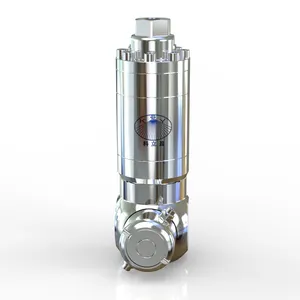


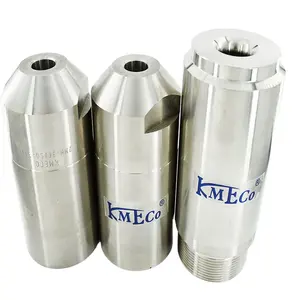





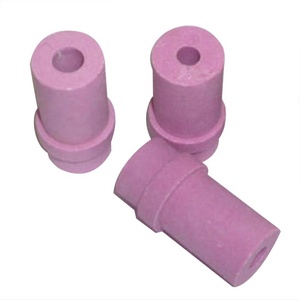

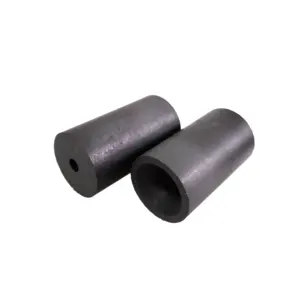

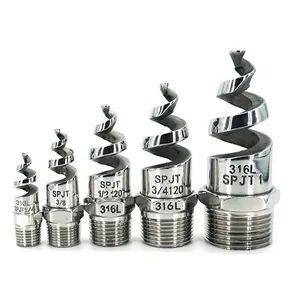












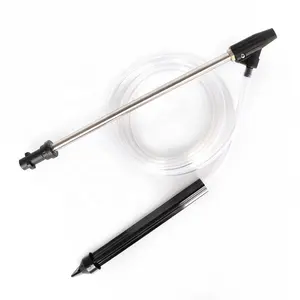



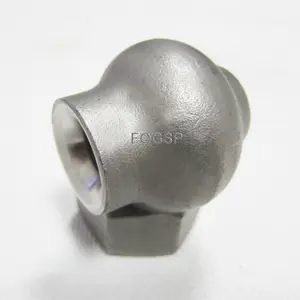

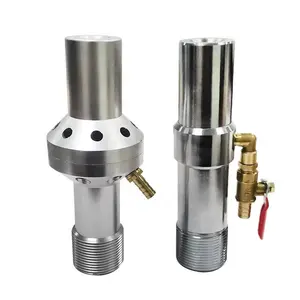






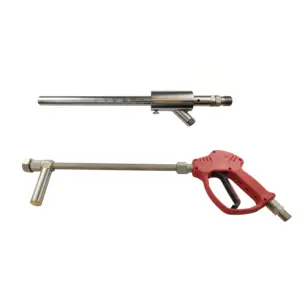

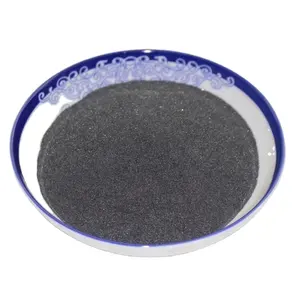

































 浙公网安备 33010002000092号
浙公网安备 33010002000092号 浙B2-20120091-4
浙B2-20120091-4